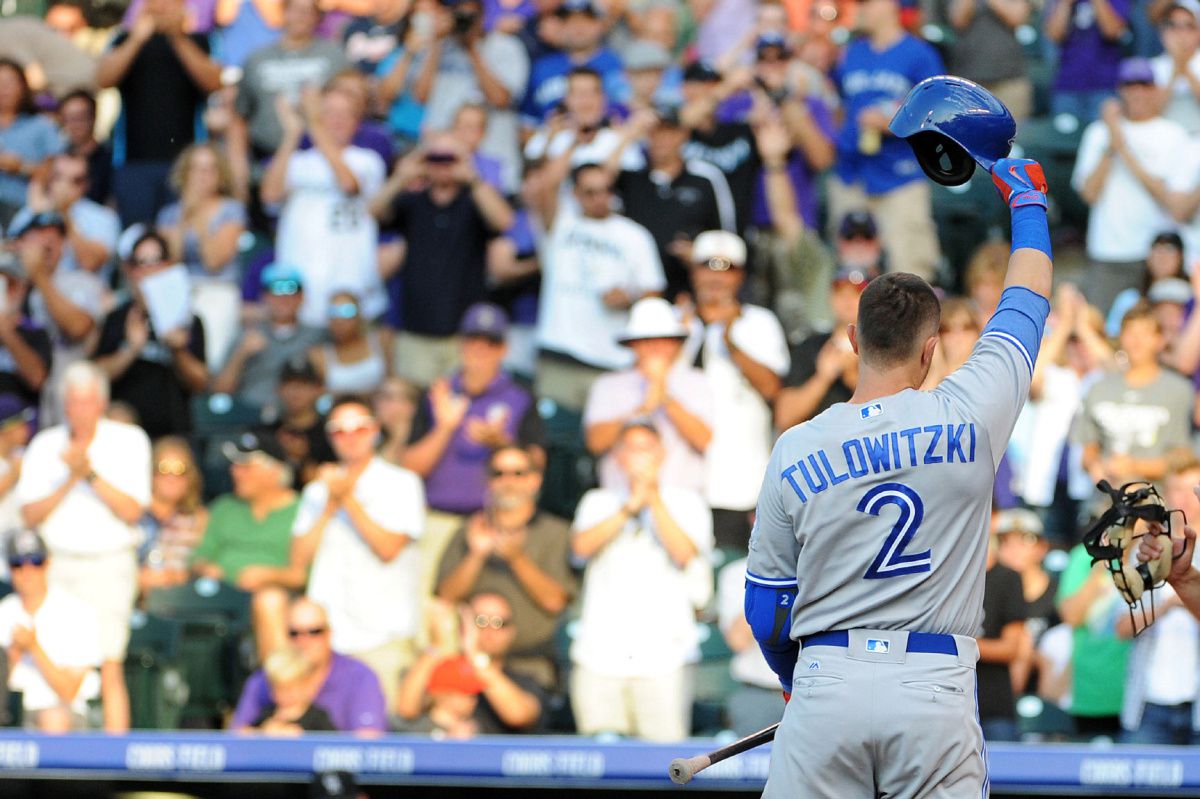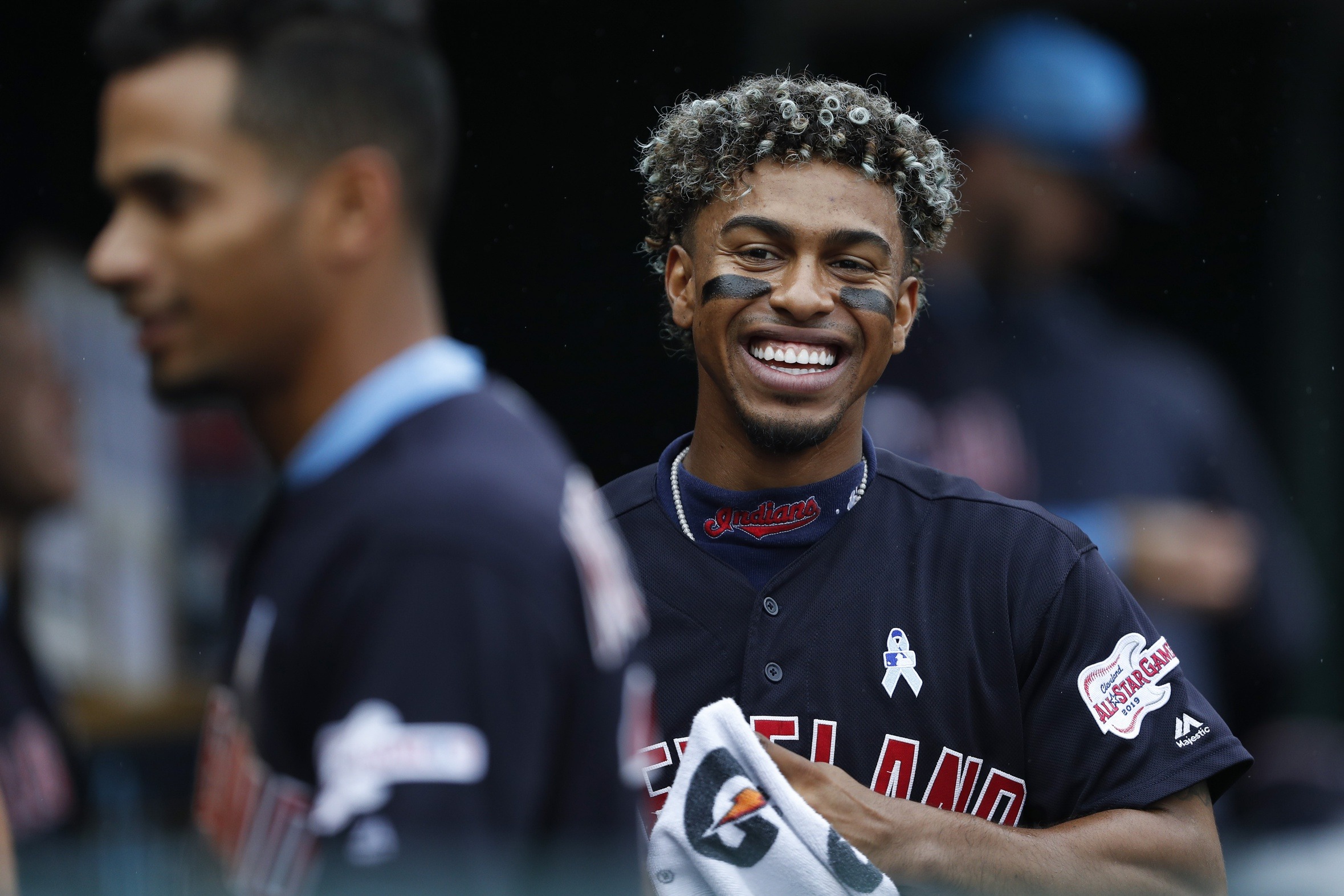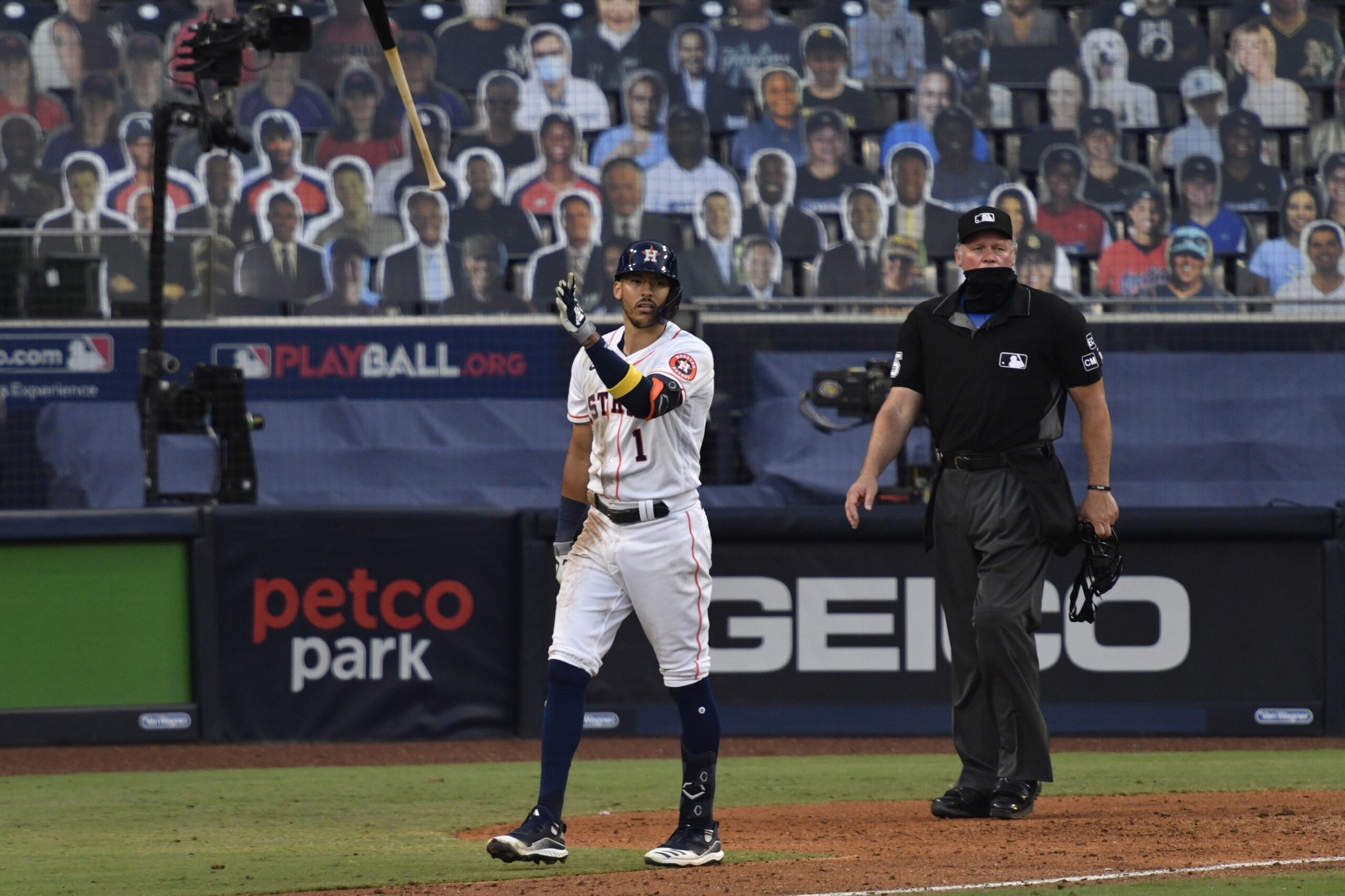© 2025 ALLCITY Network Inc.
All rights reserved.

Forget regular season records. Throw that out the window, especially since the Colorado Rockies have the sixth-worst winning percentage (.471) since becoming a joint member of Major League Baseball in 1993.
Let’s level the playing field and give them a chance to be winners.
Scrap the small market versus big market noise, Coors Field Conundrum, and any other factor that might make operating a much more difficult task for the Rockies than any other team in the sport.
The template for whether Colorado can be victorious against all others begins right now and will be graded by how well they deal the impending free agency of their star shortstop.
Put aside conversation of 94 wins, Nolan Arenado’s opt-out and the so-called “window of contention.” Handling the situation with Trevor Story is one way in which the Rockies can earn a major win that could even result in actual wins on the field.
Focus on the star-studded crop of shortstops set to become free agents next offseason: Story, Francisco Lindor, Javier Báez, Corey Seager and Carlos Correa.
Between ages 27 and 29, this quintet has been selected to 11 All-Star Games, appeared in five World Series – winning the Commissioner’s Trophy three times – and taken home just about every piece of hardware an individual can secure.
All of them pose the same riddle to their current club; how can a rock-and-a-hard-place situation be turned into a positive decision: re-sign, trade or allow to leave in free agency.
It’s an elite group that harkens back to the crop of great young shortstops in the late 90’s – Alex Rodriguez, Derek Jeter, Nomar Garciaparra, et al – that took their cues from a legendary player, Cal Ripken Jr., who forever changed the position from one with a priority on defensive to an offensive one.
As much of an inspiration Ripken was for that generation, Troy Tulowitzki stands out as the flag-bearer for this group, especially when considering players with similar numbers through their career.
The Tao of Tulo
Created by Bill James, Similarity Score allows comparisons to be made between players across different positions and decades to gain a better understanding of a player’s potential path going forward.
For Lindor, Story and Correa, each are most similar to Tulowitzki through their respective age while the 2007 NL Rookie of the Year runner-up is second-most comparable to Seager. Báez is the exception with no similarities to No. 2, but he’s second on Story’s list, ironically.
The front offices of these players five teams will want to make sure they handle the situation with their young shortstop as well, if not better, than Colorado’s approach to Tulowitzki.

At the time, the Rockies were wise to lock up Tulo a full three seasons before he was set to reach free agency. They did not have to negotiate against the likes of the Boston Red Sox, New York Yankees or even the San Francisco Giants who might have liked to bring home a kid from the Bay Area.
While that opportunity has passed for these front offices, a lot can be learned about the purple approach. Tulo’s injury-plagued career was not something that could have been foreseen at the time of his extension.
The real question comes down to whether Colorado could have done better as an organization overall. A commitment of an additional $134 million to a player in his prime, whose trade value was at an all-time high ended up producing zero postseason appearances. It was a lost opportunity that no general manager would like to repeat.
Regardless of the return years later when Tulo was on the wrong side of 30-years-old and still set to make just over $100 million, Colorado did not entirely come away with a loss in their management of the shortstop situation.
It’s by this general measure that Colorado has a second bite of the apple to secure a win at a time in which four other organizations will undoubtedly need to do the same with their most athletic infielder.
Tale of the Tape
Difficult as it may seem to rank the star free agents of the 2021-22 offseason, one thing is clear: Francisco Lindor is at the top of the pile.
With the most wins above replacement – by the standards of Baseball-Reference or FanGraphs – and the second-youngest of the group, Cleveland’s shortstop is by far the most coveted.

His thousand watt smile coupled with an aura of positivity has rightly earned the 27-year-old the nickname Mr. Smile. Rumors are already swirling about poaching the only man in this group to win awards on both sides of the ball: two Silver Slugger Awards and two Gold Glove Awards.
After Lindor, it becomes a challenge to rate and rank the remaining shortstops.
Colorado’s Trevor Story is head and shoulders the most powerful and versatile. The last of this faction to make his major league debut, the 28-year-old has amassed 134 home runs and 375 runs batted in, not to mention 80 stolen bases, most among the group in all three categories.
Then there’s Corey Seager of the Los Angeles Dodgers. He just won the World Series MVP and his first ring in addition to being named MVP of the previous round. Along with Story and Lindor, he has a pair of Silver Slugger Awards as well as a third-place finish in NL MVP voting in 2017.
Chicago Cubs’ Javier Báez also received notoriety as the top player in the game, finishing second to a nearly unanimous Christian Yelich in 2018 NL MVP voting. He’s an outlier in a few categories, notably a mediocre .635 OPS during the postseason, but as others in this class have missed substantial time with injuries, Báez has been as durable as Lindor and Story, not to mention capable of playing elsewhere around the infield.
Last is Carlos Correa of the Houston Astros, the youngest of the quintet. The first overall pick in the 2012 MLB Draft debuted at the age of 20 and starred in the World Series two years later. Its hard to deny the upside of this 26-year-old, especially as his 266 postseason plate appearances is more than double that of the rest of this group, minus Seager. Correa’s .869 OPS during those 12 October series is also highest.
It’s remarkable that so many players of this caliber from the same position could reach the open market in the same offseason. With a year until that becomes official, this crew shouldn’t count their proverbial millions before its deposited.
Following the loss of an estimated $3 billion in revenue by MLB because of COVID-19 restrictions preventing fans from attending, financial uncertainty in the sport could drastically reduce the amount of $300 million contracts seen by this group or any other free agent for the next few years. Coupled with the details of a new collective bargaining agreement next offseason, there’s never been more uncertainty for such talented young stars.
How Can The Rockies Win?
All five players are the exact same spot with one year remaining on their contract before reaching free agency and their best scenario – read: highest contract – will reap the most rewards for them and their family.
The teams for all five players are in the same spot as well. However, they have many options to make the correct call.
Though it’s a little late to sign one of these shortstops to a more team-friendly extension this close to free agency, such an endeavor would mean the team doesn’t have to bid against another. The uncertainty of the next year is a dark cloud for the game and both sides may want an amicable negotiation that benefits both parties.
If that scenario doesn’t seem favorable, a team could simply let the contract play out and see what the market looks like next offseason. The team still gets the player for the 2021 season and if management wants to give it one more shot, that opportunity is still there.

Plus, most – if not all – of these players will receive a qualifying offer, a one-year deal worth the average annual value of the top 125 contracts in the game. By comparison, the QO is valued at $18.9 million this offseason. Should the players accept the QO for the 2022 season, then the team has yet another season with the star.
However, if the player declines the qualifying offer and signs with another team, the offering club will get a compensatory draft pick. For Cleveland and Colorado, that would be a pick as high as the end of the first round; for large market clubs like Houston, Chicago and Los Angeles, it would be a selection following the compensation round B in the second round.
If a second round draft pick doesn’t seem like fair compensation for losing your stud shortstop, you wouldn’t be wrong. The other end of the spectrum would be swinging a trade for the best possible package. Whether a team’s window of contention is a few years away – and the best bundle of prospects align well – or whether there’s still an imminent postseason opportunity on the horizon – and major league ready players are required in the return – its a decision entirely up to ownership.
Tthe Red Sox opted for this exact strategy with Mookie Betts in his final year before free agency last offseason. Boston received a 23-year-old starting right fielder, a top 50 prospect and a catching prospect with the highest ranks in their organization from the Dodgers. The rich got richer, on both ends.
Los Angeles Dodgers
The pipeline of prospects for the Dodgers seems never-ending. It’s one of the reasons they could afford such a haul for Betts.
Gavin Lux, the favorite to win the 2020 NL Rookie of the Year at the start of the season, was a shortstop before his promotion to varsity last September and could be a great option to supplant Seager going forward.
Considering the 12-year, $365 million extension given to Betts and the inevitable bank vault of money set aside for Cody Bellinger and Walker Buehler, there may not be enough left to comfortably support re-signing Seager next offseason.
However, the Dodgers don’t regularly trade players in their prime nor do they need to get creative by trading Seager. If they change course, L.A. has to be favorites to get this decision right.
Chicago Cubs
The next 12 months for the North Siders will be incredibly intriguing. Besides the impending free agency of their electric shortstop, Anthony Rizzo, Kris Bryant, Kyle Schwarber and President of Baseball Operations Theo Epstein will also see their contracts run out.

It seems unlikely for the Cubs to tear it all down. To strategize for a tank nearly a decade after doing it correctly is unstable, especially after everything owner Tom Ricketts has invested in and around Wrigley Field.
There will be money available to re-sign Báez, but Chicago may only be willing to bring back two or three of the key components to the historic 2016 World Series club.
Cleveland Baseball Club
If anyone is going to rival Los Angeles and come away with the best plan for their star shortstop, it’ll be Cleveland. After dealing front end starter Mike Clevinger at the trade deadline in August and still nearly winning the AL Central, there’s little doubt about them making a good decision.
Lindor is on the lips of every front office looking to make a major upgrade for 2021. And Cleveland can easily play clubs against one another to extract the highest return. Until this biggest chip falls, it will be hard for any GM to make a move for whoever they might deem the second-best from this class.
Colorado Rockies
Even with perennial top prospect Brendan Rodgers – drafted as a shortstop out of high school in 2015 – and Alan Trejo as potential options to replace Story should he part ways with Colorado, the loss of the arguably the greatest shortstop in team history would be painful.
Following consecutive losing seasons after the first consecutive postseasons in franchise history, its unclear if the Rockies top brass can effectively evaluate their current state and understand what to do next. A trade of Story would help to recharge the rebuilding efforts while simultaneously frustrating a fan base that is already struggling to find positives with their club.
There is room on the payroll to lock up Story for the long term and Colorado hasn’t been shy about giving homegrown players lucrative extensions to stick around long past their prime.
Houston Astros
Baseball’s second-highest payroll will have $50 million coming off the books with their entire outfield – Michael Brantley, George Springer and Josh Reddick – entering free agency this offseason. It’ll be another $65.9 million next year when veteran starting pitchers Justin Verlander and Zack Grienke follow suit.
With all that available money, Houston will be poised to bring back one of its more vocal members from the 2017 World Series* winning side, especially as he’s so young.

Houston built a powerhouse by tanking for four years and supplementing the roster through trades. Should they look to extend their current six-year run, dealing Correa for the best available package could go a long way in aiding that pursuit.
Conclusion
Anything that can happen with this bunch most certainly will. And that has nothing to do with the individual players themselves.
The looming CBA negotiations and loss of $100 million per club – as per Rockies owner Dick Monfort – mean that teams will have to get creative to get out from under the disaster 2020 has brought financially.
Coupled with three more of the best 10 shortstops in the game since 2016 coming onto the free agency this offseason – Marcus Semien, Andrelton Simmons and Didi Gregorious – not to mention KBO superstar Ha-Seong Kim, it’s certainly lining up to a buyer’s market for teams.
The fate of MLB the next few years may be a mystery. What’s clear is that these five shortstops have the potential to shape the future their franchise.
Colorado may not be a favorite to secure a World Series ring any time soon, but it has a chance to win a major battle when it comes to approaching the impending situation with its shortstop.
Comments
Share your thoughts
Join the conversation



